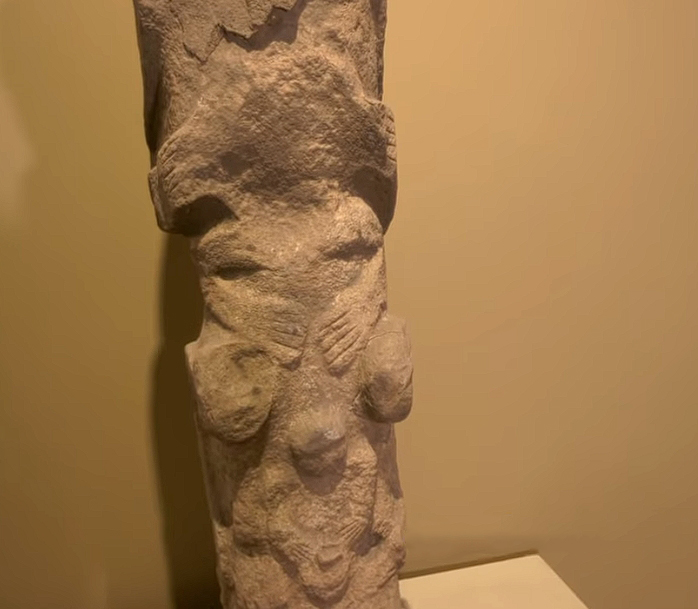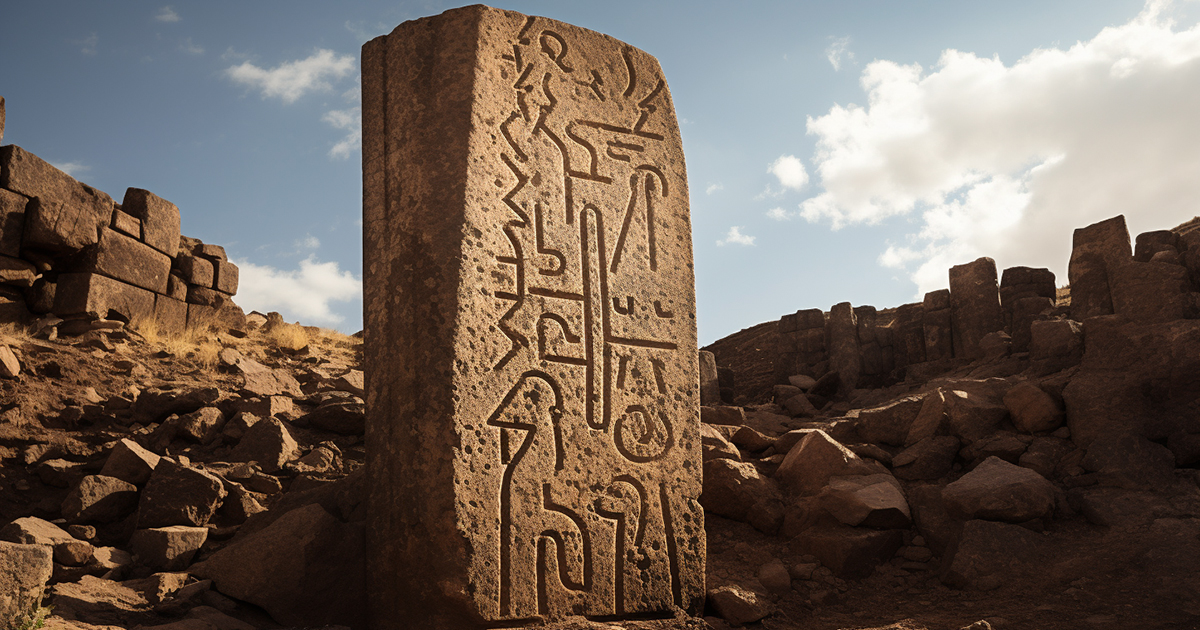Introduction to the Mysterious Site
Within the realm of ancient enigmas and captivating archaeological destinations, one location stands out – Gobekli Tepe in Sanliurfa, Turkey. This ancient complex, with a history dating back over 11,000 years, is celebrated for its elaborate stone pillars carved with depictions of animals and humanoid figures. Amidst these impressive structures, there is a particular point of interest – a stone pillar bearing marks of defacement that beckons us to ponder its significance. In a captivating exploration featured in Season 12, Episode 16 of the series “Ancient Aliens,” researchers delve into the mysteries surrounding this intriguing pillar, sparking inquiries into its potential ties to humanity’s extraterrestrial heritage.
The Encounter with the Cryptic Artifact
The episode commences with author and investigator Andrew Collins embarking on a journey in June 2017 to the Sanliurfa Archaeology and Mosaic Museum, situated just a short distance of 10 miles from Gobekli Tepe. Within this museum lies one of Earth’s most mysterious stone structures. Collins’ mission is to rendezvous with curator Taha Ozyavuz and unravel the secrets veiled within this ancient relic.

Upon scrutinizing the stone pillar, Collins and Ozyavuz are struck by its extraordinary characteristics. The pillar showcases three distinct figures of varying sizes, prompting the intriguing question – what story do these figures narrate, and why were two of them intentionally defaced or eradicated in ancient times? Could there have been a deliberate attempt to conceal a profound revelation about the origins of humanity?
The Speculation of an Extraterrestrial Link
Here unfolds the realm of ancient astronaut theory, suggesting that beings from beyond our world may have significantly influenced human history. Within this context, the defaced stone pillar at Gobekli Tepe assumes a new layer of fascination. Might it harbor clues regarding a genetic connection linking us to celestial ancestors?
David Wilcock, an advocate of ancient astronaut theory, muses on the symbolism embedded in the pillar. He highlights a larger entity depicted on the pillar, potentially an extraterrestrial being, cradling another figure possessing human-like traits. This second figure appears engaged in the act of birthing a human infant. Could this depiction signify a breeding experiment that catalyzed the evolution of present-day humans?
William Henry contributes to the enigma by underscoring the importance of totem poles as vessels of knowledge. Viewed in this context, the stone pillar at Gobekli Tepe could be interpreted as an ancient compendium or time capsule, safeguarding a genealogical lineage. Tracing this lineage may lead to the conclusion that our ancestors of yore were distinctly non-human, thereby hinting at an extraterrestrial association.
David Childress proposes that the core motive behind preserving such insights was to transmit knowledge about our extraterrestrial progenitors to forthcoming generations. Consequently, the defaced stone pillar emerges as a cryptic message from antiquity, awaiting decryption by those intent on unraveling the enigmas of our heritage.
Video Presentation:
Conclusive Thoughts
The defaced stone pillar at Gobekli Tepe stands as a captivating puzzle, enticing speculation and introspection. While the “Ancient Aliens” segment raises thought-provoking inquiries about its symbolism and purpose, the solutions remain elusive. Was it an endeavor to obscure the truths surrounding humanity’s extraterrestrial past, as some conjecture? Or does it harbor a more intricate and profound narrative about our ancient history?
Gobekli Tepe persists as a testament to the enigmas cloaking our past. As researchers and archaeologists delve further into its secrets, we can only anticipate that the truths concerning this alluring site and its defaced stone pillar will one day be unveiled, shedding illumination on the deep connection between humanity and the vast cosmos. For now, it lingers as an enduring enigma, beckoning us to venture into the realms of ancient visitors and our own origins.
